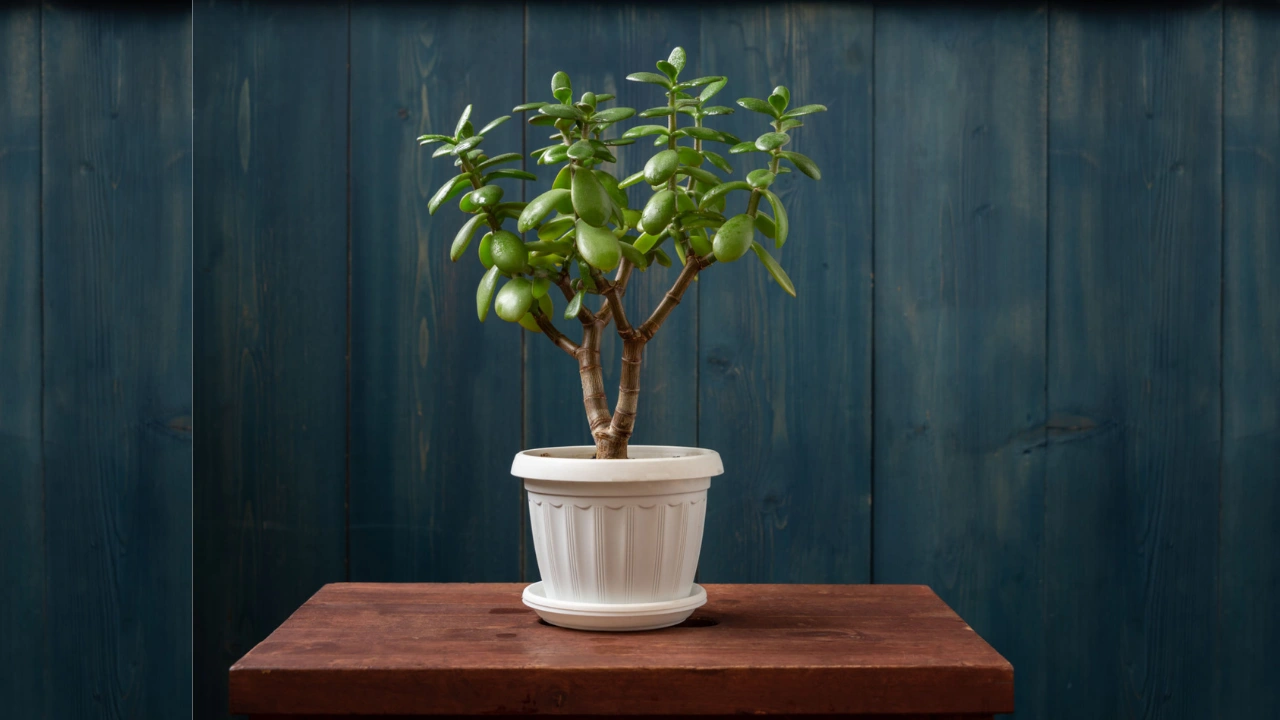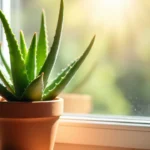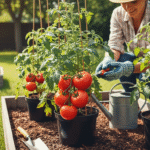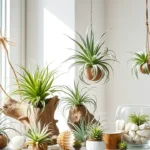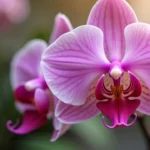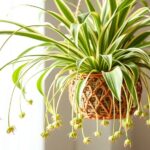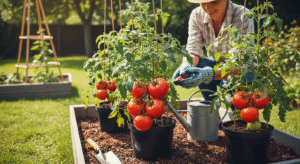The Jade plant is popularly known as a Good luck plant or money tree. It is a very friendly plant and needs very little maintenance. But if you take good care of it, it can grow very large and live a very long time. But what if, one day it turns yellow, pests, dried up and roots start to rot?
I know you are someone like me, who loves succulents because succulents need less care but too much negligence can potentially threaten your jade plant’s health.
Some questions that might pop up in your head like, “what is wrong with my jade plant and how do I take care of it?” So, let us guide you through some instructions that will help you to know everything on how to care for a jade plant in your home.
Table of Contents
About Jade Plant
| Characteristic | Description |
|---|---|
| Scientific Name | Crassula ovata |
| Common Names | Jade Plant, Lucky Plant, Money Plant, Friendship Tree |
| Plant Type | Succulent |
| Native Region | South Africa and Mozambique |
| Growth Habit | Compact, bushy; thick, woody stems with fleshy, oval-shaped leaves |
| Height | 2–4 feet (indoors); up to 10 feet (outdoors, in ideal conditions) |
| Light Requirements | Bright, indirect sunlight or partial sun; tolerates full sun with acclimation |
| Watering Needs | Drought-tolerant; water only when soil is dry to the touch |
| Soil Type | Well-draining soil; cactus or succulent potting mix preferred |
| Temperature Range | Thrives in 18–24°C (65–75°F); not frost-tolerant |
| Humidity | Prefers low to average humidity levels |
| Fertilizer | Use a balanced liquid fertilizer diluted to half strength once a month in spring and summer |
| Blooming | Produces small, star-shaped, pinkish-white flowers in winter (mature plants only) |
| Toxicity | Toxic to pets (cats and dogs) if ingested |
| Propagation | Propagate using leaf or stem cuttings |
| Pests and Diseases | Common pests: Mealybugs, spider mites; susceptible to root rot if overwatered |
| Lifespan | Can live for decades with proper care |
| Symbolism | Represents good luck, prosperity, and friendship |
How to Care for a Jade Plant?
The Jade plant is scientifically known as Crassula ovata and is very ideal for beginners like you and me. You can just fall in love with them. But these plants need special care and maintenance if you want them to live longer.
If you take good care of jade plants, these can become very healthy and can flourish. Healthy jade plants can flourish with tiny oval-shaped green leaves. You can feel the freshness and calmness in the air.
Low maintenance and overwatering can make the leaves of jade plants yellowish or roots rot and catch a disease or pest. That is why let’s dive into the jade plant’s caring instructions given below, starting with light requirements.
Jade Plant Light Requirement
Jade plants adore direct, strong sunlight. You should provide at least five to six hours of bright sunshine daily.
Ideally, the kitchen and offices are the best places to put a jade plant. However, the windows facing south are said to receive the right or the most amount of sunlight. Also, the jade plants can make your tops and desks aesthetically pleasing.
Note for Jade plant care:
- If the leaves have a crimson border around them, you’re providing enough bright light to keep your plant happy.
- If they are not receiving enough light, the leaves may turn leggy.
- In contrast to other succulents, direct sunlight can burn the jade’s leaves for an extended period. That is why you need to place the jade plant in indirect sunlight.
Jade Plant Water Requirement
Being a desert plant, jade can tolerate some watering neglect. Although, the leaves will not show any signs of water stress until the plant is dead.
Make sure your small container has a drainage hole. The jade plant doesn’t prefer sitting in water for a long time. This plant needs excellent drainage more than anything!
Watering Guidelines for seasons:
Summer and Spring
In the spring and summer, the jade plant grows actively, but it will need more care in the other seasons. Since your jade plant is actively growing in the spring and summer, it will need more water than at other times. Care for jade plant includes deeply watering it. Next, you should not water them again until the soil is almost dry.
I suggest you water them once or twice a week because the soil dries out soon in the surrounding environment.
Winter
In winters, the jade plant might go dormant, which would cause it to halt or stop growing altogether. The Jade plant won’t require much water during this time. You should let the soil of the Jade plant dry between applications. Large and mature jades may only need one or two waterings during their whole dormant season.
Tips for Jade plant care:
- You should water more frequently if the leaves begin to wilt or turn brown.
- You should not overwater them as the leaves can become too squishy.
- When watering, try to avoid sprinkling water on the leaves. It might cause rot in a humid atmosphere.
- Also, remember that some jade plants are delicate to tap water due to the high salt concentration. If you witness your jade isn’t flourishing, you can switch to distilled or filtered water.
Jade Plant Soil Requirement
Jade plant grows best in a light, airy soil combination because it is a desert plant. You can try a cactus and orchid-specific product for better growth.
Ideally, caring for jade plant includes keeping the pH at about 6.0, which is slightly acidic. It drains to support an excessive amount of moisture from building up. Soil also encourages fungi growth.
You can also use some perlite to help drainage if you use an all-purpose potting mix instead. To help add moisture from the soil, you can also place your jade plant in a terracotta or clay container.
Note: Perlite is a naturally occurring mineral that helps to modify and improve the soil texture.
Jade Plant Fertilizer Requirement
Jade plants grow very slowly and require very less fertilizer than all other indoor plants. From spring through fall, you can feed your jade plant once every two weeks. You can also use a balanced plant food with an equal N-P-K ratio across the board, like 10-10-10.
Additional Jade Plant Care Tips:
- Once every six months, you should feed your plant with a balanced fertilizer.
- As you know, jade roots can be easily burnt. Make sure the soil is moist before applying any liquid fertilizers.
- Keep in mind that winter is not part of the growing season, even for an indoor plant. Strictly avoid fertilizing in winter.
- Since jade plants develop slowly, avoid using nitrogen-rich fertilizers.
Jade Plant Temperature and Humidity Requirement
Jade plants grow best at room temperature between 18° and 24°C. Although, they prefer slightly colder conditions at night and throughout the winter.
If you keep your jade plant outside all day during the summer season, bring it inside as the temperature drops below 10°C in the winter season. The Jade plant is not frost-hardy.
You should keep your jade plants out of draughty locations and away from cold winds throughout the winter. Jade plants may lose their leaves if exposed to freezing temperatures.
Like many other desert plants, Jade plants can tolerate average home humidity. They prefer between 30% and 50% humidity, just like us. Jade plant care includes not placing them next to air conditioners or other hot, dry air sources.
Jade Plant Repotting Requirement
Your cute jade plant doesn’t bother being root-bound in a small pot. Keeping them tied to their roots will make the jade smaller and easier to handle.
Caring for jade plant includes repotting every two to three years to promote growth. You can repot older jade as necessary or once per four or five years.
Jade plant care tips:
- If possible, you should choose a clay or terracotta container. It will drain away extra moisture from the soil. It will prevent your plant from waterlogging.
- You can transplant your jade early in the spring, right before the growing season starts.
- Don’t water the plant for about a week after repotting.
- Before fertilizing, you should wait at least a month to avoid burning new roots.
Jade Plant Pruning
You can easily manage your cute little friend’s height, width, and shape. How? With easy pruning! Jades are popular as bonsai because they are not overly sensitive to having stems and leaves removed.
Although pruning is not necessary for the jade plant’s health, it is the only natural means of controlling how it appears. You should never take out more than 20% of the plant’s total growth at once.
Care for jade plant includes letting the plant rest after a heavy trim. Do not swap the locations too often. Before performing another trim, give it some time to recover throughout the summer growth.
Jade Plant Propagation
You can quickly propagate your new tiny jade from the tips of the mother plant. Take 3-inch cuttings from the ends of your jade plant. Having a few pairs of leaves on each tip would be best.
Instead of immediately potting up those pieces, leave them out in the open for about five days to allow the cuts on them to heal.
Then, you can put the pieces standing erect in slightly damp soil in a small container. If you are still questioning “how to care for a jade plant cutting,” look no further. It is pretty easy.
Place your cutting in a location with direct, bright light. Stop watering the seedlings until they begin to root, which should take at least a few weeks. Be patient with your little friends.
Jade Plant Pests and Diseases
Even though jade plant care is generally less and not too fussy, you might encounter a few problems. It will make you wonder how to care for jade plants to overcome these issues?.
1. Wrinkled Leaves
If you start to notice wrinkly or shriveled leaves of your jade plant, it only means that your plant isn’t getting enough water as it stores water in its leaves. They might be drooping or wilting the entire plant, but they can quickly recover once you water them.
2. Loss of Leaves
Falling off a few leaves may be due to natural reasons, but a sudden loss of many leaves can leave you in vain. How to take care of a jade plant now?
Your jade plant may not be receiving enough light if it is dropping leaves at a rapid rate. If the issue persists, move the plant to a location with bright, indirect light for at least six hours each day.
Your plant may be too warm and needs to be moved to an area with a somewhat cooler (but not chilly) temperature.
3. Yellowing
Sometimes it is ok to have one or two yellow leaves, but if you have yellowing all over your plant, that could indicate a more significant problem. It is typically a sign of overwatering. You should reduce your watering frequency while looking for additional warning indicators.
4. Mealybugs
Mealybugs can be a cause of concern in jade plant care. These are present if you see blobs of a white substance that resemble cotton. You should pay specific attention to the stem and leaves converging.
It’s honeydew, a white substance that appears while insects are draining sap from your plant. It could get dark as a sooty mold develops on it. How to care for a jade plant now? Until the symptoms disappear, thoroughly clean your plants with Q-Tip cotton dipped in rubbing alcohol once per week.
5. Spider Mites
Spider mites are less frequent than mealybugs but they can harm your jade severely. Spider mites produce fine webs on the underside of leaves. The leaves of jades may also have brown or black splotches.
Jade plants have a unique breathing cycle that makes oils and soaps ineffective against them. You can use alcohol wipes and swabs to avoid the mites.
6. Powdery Mildew
These white powder-like pests do not happen often indoors. Yet if problems arise and you question yourself, How to care for a jade plant in a mildew case? Combining one tablespoon of baking soda and one-half teaspoon of liquid, non-detergent soap with one gallon of water will do its work. Now, just spray the mixture on the whole plant.
7. Root Rot
Over-watering can lead to root rot. Avoid frequent watering, check before the soil is dry or not.
Conclusion
Succulent house plants like jade plants are hardy and simple to grow inside. If you are a beginner plant parent like me, you will adore these little cuties due to their physical features and ease of care. They are low on maintenance.
You can unleash your creative side while pruning them into creative designs. The jade plants are very eye-catching, and can make an aesthetic statement in your home if you put it on your desk or table.
When planted indoors, they can grow to a height of three feet or more. They can survive a very long period, frequently passed down to generations.
If you like this article and still have any queries about how to care for jade plant, do let us know in the comments. We will get back to you ASAP!
Frequently Asked Questions
Q1. Does my jade plant require misting?
Jade plants don’t prefer to be misted because they like dry air.
Q2. Why have the leaves on my jade shriveled?
Lack of water is the main cause of your jade plant’s shriveled, deflated-appearing leaves. In this case, care for the jade plant includes increasing the quantity or frequency of your irrigation (with correct drainage).
Q3. Do jades like to be root-bound?
Crassula Ovata (Jade plant) doesn’t mind being root-bound.
You can repot jades every two to three years. You should not water them for a week or two after repotting them to give them time to settle.
Q4. Where should I put my jade plant in my home?
As I have mentioned earlier, jade plants require intense light. You can place little beauties near a window.
But, make sure they aren’t getting any wind, especially during the winter. They dislike temperatures below 50 Fahrenheit.
Q5. Can Jade plants flower?
Jade plants, particularly those older than ten, occasionally bloom throughout the winter. However, it usually happens once in a moon. The tips of the branches have little white or pink bunches.
Q6. Are they toxic to pets?
Yes, all parts of the jade plant are toxic to pet

